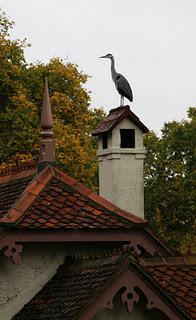 However, even a well-fed pelican can fancy a snack between meals. In 2006, one of the St James's Park birds became a media star when it was photographed eating a pigeon (a feat which arguably makes it something of a London hero). Another apparently used to fly to London Zoo and steal their fish. Indeed, a discussion of the pelicans in the House of Lords alluded to the risk of other birds' young being eaten if there were too many pelicans in the park. (It also discussed their sex, something which is apparently difficult to establish and has been worrying politicians for at least half a century.)
However, even a well-fed pelican can fancy a snack between meals. In 2006, one of the St James's Park birds became a media star when it was photographed eating a pigeon (a feat which arguably makes it something of a London hero). Another apparently used to fly to London Zoo and steal their fish. Indeed, a discussion of the pelicans in the House of Lords alluded to the risk of other birds' young being eaten if there were too many pelicans in the park. (It also discussed their sex, something which is apparently difficult to establish and has been worrying politicians for at least half a century.)These greedy, charismatic birds may attract most attention, but there are plenty of other interesting species to spot. On my last walk through the park, one heron was striking an ornamental pose on the roof of Duck Island Cottage. In fact, there are 15 species of waterfowl here as well as birds including great spotted woodpeckers and tawny owls. An account from 1878 describes their popularity:
The waterfowl here are natives of almost every climate in the world, and the Zoological Society itself has scarcely a finer or more varied collection. Those which are not foreign are mostly descendants of the ducks which Charles II. took such pleasure in feeding with his own royal hands. ... It is almost needless to add that the banks of the "canal," and the bridge which spans it, are the haunt of children and their nurses, and the pieces of bread and biscuit which are given daily to the ducks, geese, and swans would well-nigh feed the inmates of a workhouse.

